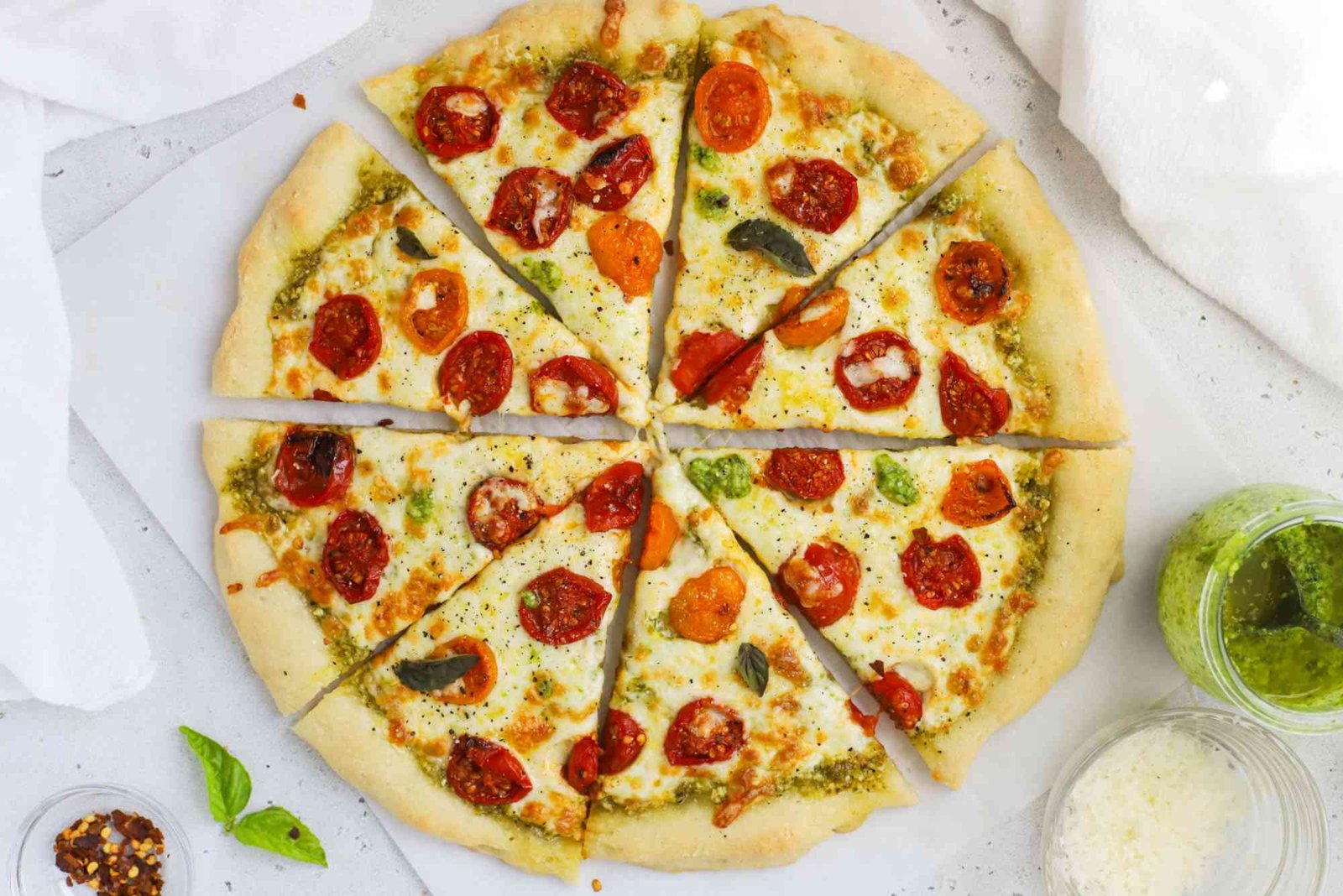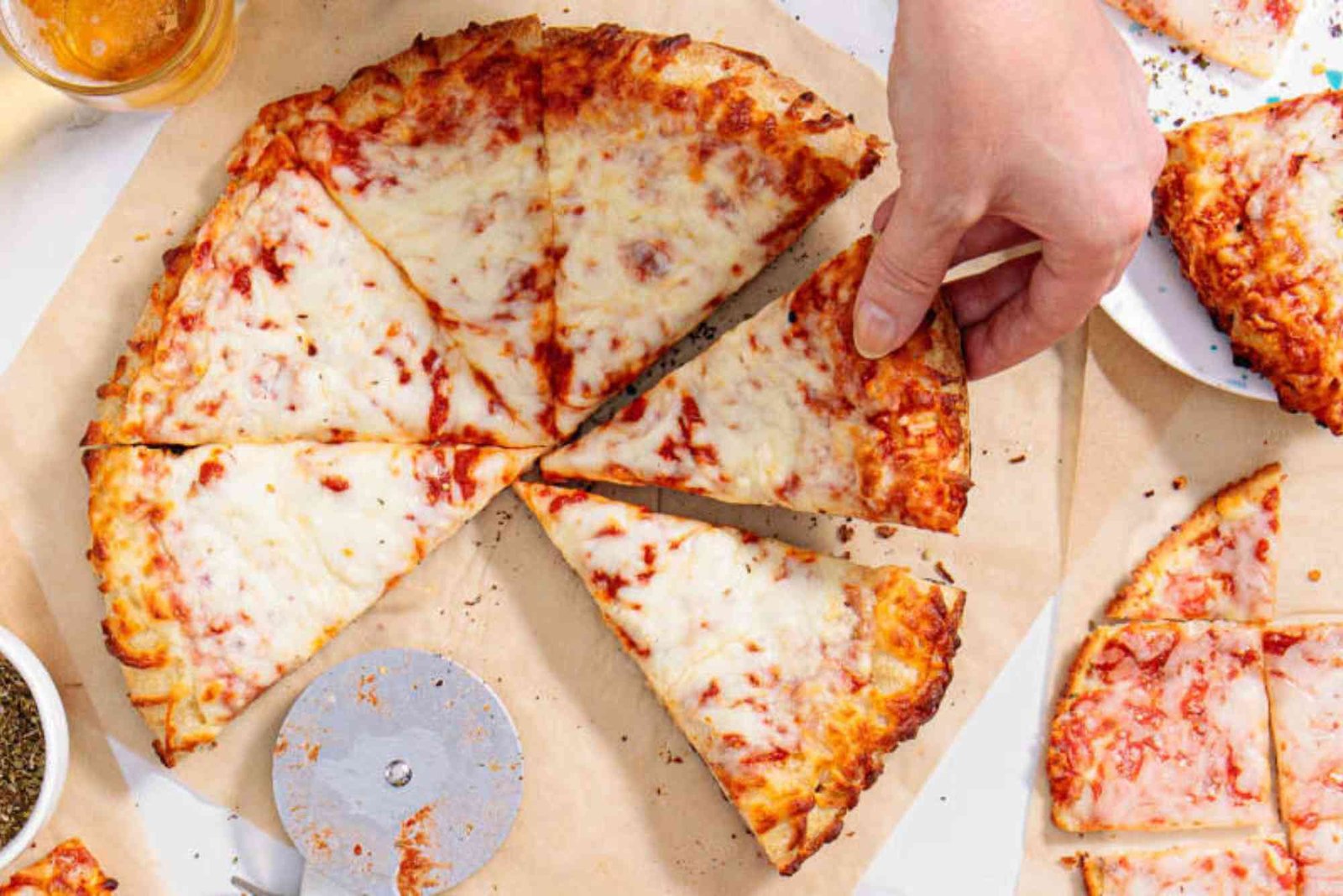If you’ve ever tasted a slice of pizza topped with rich, creamy white sauce, you know it’s a flavor that’s hard to forget. Pizza white sauce—also known as béchamel sauce—is a silky, savory alternative to tomato-based pizza sauces. This sauce adds a touch of luxury to your homemade pizzas and pairs beautifully with chicken, spinach, mushrooms, and other mild toppings. In this detailed guide, you’ll learn exactly what pizza white sauce is, how to make it from scratch, and how to achieve the perfect texture and taste every time.
Understanding What Pizza White Sauce Is
Pizza white sauce is a creamy blend made from butter, flour, and milk—seasoned with garlic, salt, and cheese for added depth. Unlike traditional red sauce, it offers a smooth, velvety base that complements lighter toppings. This sauce is perfect when you’re craving something less acidic yet full of flavor.
Many home cooks think white sauce is complicated, but it’s actually one of the simplest sauces to master. It starts with a roux (a cooked mixture of butter and flour) that thickens the milk into a luscious cream. With just a few basic pantry ingredients, you can create a restaurant-quality sauce in minutes.
If you want to learn more about what is pizza white sauce, you’ll find that its origins date back to classic French cuisine, where béchamel sauce was one of the five “mother sauces.” Over time, it evolved into the cheesy, garlicky version we now love on white pizzas.
Step-by-Step Guide to Making Pizza White Sauce
Making pizza white sauce is simple if you follow a clear process. Here’s a breakdown of each stage to help you perfect it.
Prepare Your Ingredients
Before you start, make sure you have everything ready. You’ll need butter, flour, milk, minced garlic, salt, pepper, and grated cheese (usually Parmesan or mozzarella). Room-temperature milk blends more smoothly, preventing lumps.
Create the Roux
Melt butter in a medium saucepan over medium heat. Once it’s bubbling, whisk in the flour. This mixture should cook for about one minute—just long enough to remove the raw flour taste. The roux will become slightly golden, giving your sauce a nutty aroma.
Add the Milk Gradually
Pour in warm milk slowly, whisking constantly to ensure a lump-free texture. This is the secret to achieving a creamy consistency. Continue stirring until the sauce thickens, which usually takes around five minutes.
Season and Flavor
Once thick, reduce the heat and add garlic, salt, pepper, and cheese. Stir until the cheese melts completely. Adjust seasoning to your taste—some prefer a hint of nutmeg or Italian herbs for extra depth.
Achieve the Right Consistency
Your sauce should coat the back of a spoon without being too thick. If it’s too dense, whisk in a splash of milk. If it’s too thin, let it simmer a little longer. This balance ensures it spreads perfectly on pizza dough without soaking through.
Cool and Use
Allow the sauce to cool slightly before spreading it on your pizza base. It should still be warm but thick enough to hold its shape. Spread evenly, add your favorite toppings, and bake as usual.
Common Mistakes to Avoid When Making Pizza White Sauce
Even simple sauces can go wrong if you’re not careful. The most common issue is overcooking the roux or adding cold milk too quickly, which leads to lumps. Another frequent mistake is skipping the whisking process, which causes uneven texture. Always keep stirring until the sauce is smooth.
Using too much cheese can also make your sauce greasy, while not enough butter can cause it to separate. Balance is key. If your sauce curdles or thickens too fast, lower the heat and whisk in a bit more milk to rescue it.
Flavor Variations You Can Try
Once you’ve mastered the basic recipe, you can experiment with flavor variations. Add roasted garlic for depth, or mix in herbs like basil, oregano, or thyme. For a richer taste, blend in cream cheese or heavy cream.
Some pizza lovers like to include sautéed mushrooms or spinach directly into the sauce for a layered texture. Whether you’re aiming for a light and herby sauce or a decadent, cheesy blend, the possibilities are endless.
Why Pizza White Sauce Works So Well
The secret behind pizza white sauce’s popularity lies in its versatility. It complements a variety of toppings—from grilled chicken and artichokes to shrimp and roasted vegetables. Its neutral flavor base enhances toppings without overpowering them.
Unlike tomato sauce, which has acidity, white sauce brings smoothness and a creamy mouthfeel that pairs beautifully with crispy crusts. It’s also perfect for those who prefer less spice and more subtle flavor.
This is one of the reasons why many fitness enthusiasts, even those who train at places like Orange Theory Mountain View, opt for pizzas made with white sauce—they can control ingredients, fats, and proteins more easily while still enjoying indulgent flavors.
Storing and Reheating Pizza White Sauce
Homemade white sauce keeps well if stored properly. Let it cool completely before transferring it into an airtight container. It can be refrigerated for up to four days. When reheating, do so gently over low heat while stirring continuously. If the sauce has thickened too much, add a splash of milk to restore its original texture.
Freezing is also an option. Simply thaw in the refrigerator overnight before reheating. Always ensure proper storage to maintain food safety tips and prevent spoilage.
How to Use Pizza White Sauce Beyond Pizza
While it’s a star on pizzas, this sauce is more versatile than you might think. Use it as a base for pasta, lasagna, or casseroles. It also works as a dip for breadsticks or grilled vegetables.
You can even drizzle it over baked potatoes or use it in sandwiches for a creamy twist. Once you learn the technique, this sauce can become a foundation for countless comforting dishes that fit right into your food basics repertoire.
Frequently Asked Questions (FAQs)
What is pizza white sauce made of?
Pizza white sauce is made primarily of butter, flour, milk, garlic, and cheese. It’s a creamy alternative to red sauce with a mild flavor.
Can I make pizza white sauce without flour?
Yes, you can substitute flour with cornstarch or gluten-free flour for a similar thickening effect. The flavor will remain creamy and rich.
How can I make my white sauce thicker?
If your sauce is too thin, simmer it longer or add a little more flour to your roux next time. The key is steady whisking and gentle heat.
Is pizza white sauce healthy?
It can be, depending on the ingredients. Using low-fat milk or olive oil instead of butter reduces calories without compromising taste.
Can I use pizza white sauce as pasta sauce?
Absolutely. White sauce works beautifully with pasta, giving you a creamy, cheesy base similar to Alfredo sauce.
Mastering Your Pizza White Sauce
Now that you know what pizza white sauce is and how to make it step by step, you can easily bring restaurant-quality flavor into your kitchen. From preparing the roux to seasoning it perfectly, every detail matters.
Whether you’re crafting a white pizza for a weekend dinner or experimenting with new toppings, this sauce gives you endless creative freedom. Try it today, and once you’ve perfected it, explore more culinary ideas and inspiration through food basics resources.




